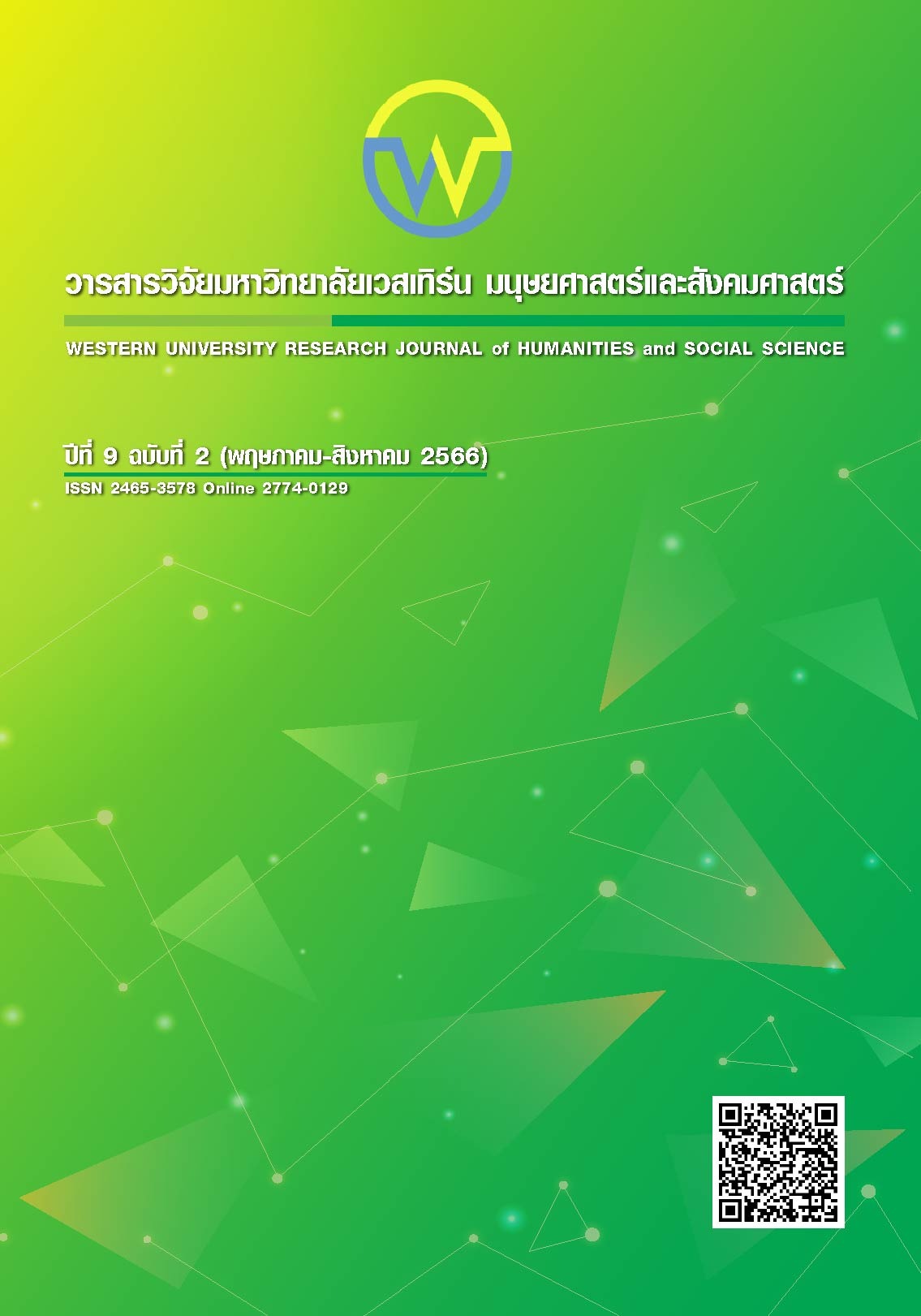The Relationship among Factors Affecting Teachers' Online Teaching Stress
Main Article Content
Abstract
The objectives of this research were 1) to study the relationship between factors affecting teachers' online teaching stress and 2) to study the online teaching stress among teachers classified by personal status in a private university. The research model is a quantitative research using the concept of Çoklar, Efilti, & Sahin (2017) that focuses on studying stress from using technology among educational personnel which related to teaching and learning management of teachers, together with other concepts affecting stress from online teaching as a research framework. The research area is a private university in the northern part of the country. The sample group used in this research were 136 teachers who were drawn from non-probability random sampling using a questionnaire as a tool. Data were analyzed using descriptive statistics including frequency, percentage, mean and standard deviation. The results showed that 1) different genders affected self-efficacy. and teachers' online teaching stress were significantly different at the .05 level. 2) Teachers of different ages have different emotional exhaustion, self-efficacy and the stress from using online teaching technology significantly different at the .05 level. 3) emotional exhaustion, self-efficacy, the stress of using online teaching technology and their attitude towards online teaching technology with the stress of the teacher's online teaching have a positive relationship where the stress from using online teaching technology was the most positive correlation with teachers' online teaching stress (r=.663). Findings from this research will be useful as a guideline to reduce stress from online teaching, such as training to change teachers' attitudes about the use of technology in online teaching management.
Article Details

This work is licensed under a Creative Commons Attribution-NonCommercial-NoDerivatives 4.0 International License.
References
กัลยา วานิชย์บัญชา. (2561).สถิติสำหรับงานวิจัย. (พิมพ์ครั้งที่ 12). กรุงเทพฯ: โรงพิมพ์กรุงเทพฯ : ห้างหุ้นส่วนจำกัดสามลดา.
เปรมภาว์ ด้วงทอง, วรสันต์ ถาวรประเสริฐ, วิจิตรา ธนะศิริขจร และวิษณุพงษ์ โพธิพิรุฬห์. (2564).ความเครียดจากการใช้เทคโนโลยีในการจัดการเรียนการสอนออนไลน์ของอาจารย์ มหาวิทยาลัยราชภัฏสงขลาในช่วงการระบาดของโรคโควิด-19: การตรวจสอบตัวแปรทำนายและผลลัพธ์. วารสารธรรมศาสตร์, 40 (3), 49-73.
Bandura. (1986). Social foundations of thought and action: A social cognitive theory. Englewood Cliffs, NJ: Prentice-Hall.
Çoklar, A. N., Efilti, E., & Sahin, L. (2017). Defining Teachers' Technostress Levels: A Scale Development. Online Submission, 8(21), 28-41.
Dong, Y., Xu, C., Chai C. S., & Zhai, X. (2020). Exploring the Structural Relationship among Teachers’ Technostress, Technological Pedagogical Content Knowledge (TPACK), Computer Self-efficacy and School Support. The Asia Pacific Education Research, 29(2),147–157.
Harvanek ZM, Mourao MA, Schnell S, Pletcher SD. (2018). A computationalapproach to studying ageing at the individual level, From http://dx.doi.org/10.1098/rspb.2015.2346 on 21/05/23
Kendra Cherry, MS. (2022). How Social Learning Theory Works. From https://www.verywellmind.com/social-learning-theory-2795074 on 21/04/2003
Krejcie & Morgan. (1970). Determining sample size for research activities. Educational and Psychological Measurement, 30(3), 607-610.
Olaskoaga-Larrauri, J., Barrenetxea-Ayesta, M., Cardona-Rodríguez, A., Jose MijangosDel Campo, J., & Barandiaran‐Galdós, M. (2016). Between Efficiency and Transformation: The opinion of deans on the meaning of quality in higher education. European Journal of education, 51(2), 257-269.

